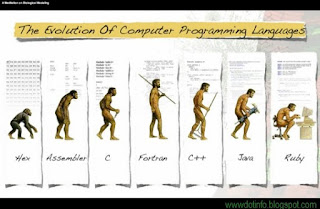Python can offer a lot of things to Java software developers. Both programming languages are pretty interesting both in their similarities as well as differences. In this article, we will dive slightly deeper & explore some of the finer technical differences. There's the biggest similarity is - everything is an object design & reputation for excellent cross-platform support. Plus, the things are like immutable strings & deep and relatively standard libraries.
On the other hand, both Python & Java are having differences also. Java has always had a single large corporate sponsor. However, the support of Python is more distributed. Still, both programming languages are well within the Algol-like family of languages. When we talk about Python, the use of syntactically-significant white spaces sets it a bit far expecting the mainstream than Java. And this is something comparatively familiar with the use of braces & semi-colons like C language.
The two programming languages are compiled down to bytecodes, which run on virtual machines, on the other hand, Python usually does it automatically at runtime while Java has a separate program, which does it. The virtual machines, for the most part, isolate the languages from the fluctuations of the underlying hardware.
The biggest difference between two – Duck Typing
Java is statistically typed, on the other hand, Python is strongly but dynamically typed. It means that are bound to strongly typed objects at runtime. There's the only condition on the type of object a name that refers that it supports the operations that are required for the particular object instances for particular programs.
Duck typing makes python quite easier to write & not too bad to read, however, difficult to understand. In Python, static type inference is a known hard problem.
In object-oriented languages, the classes are meant to model concepts, however, the concepts are purely mental constructs, which are essential attitudes toward the concrete stuff of reality. The concept – Duck Typing reflects the fact nicely. The object has not to "be" a particular type, but it just has to be usable.
Python allows you get the job done very easily
It is a programming language, which gets you out of the way & allows you get the job done. Sometimes, it feels like this is a helpful assistance with handling tools. Moreover, the programming language can comfortably scale to large applications, plus high-powered web services. This is also a great glue language in order to bring together everything from the statistical algorithm in R to FORTRAN-era numerical libs.
On the other hand, Java design has an interesting mixture of atomic types, which built into the language. Well, in Python, this is not possible, but there is a chance of Python that is called as Cython, which allows users to specify the types where embracing the information could result in faster code that is being emitted by the compiler.
Conclusion
Java was a major step forward in simplicity as compared to C++. That is why numerous people rightly fell in love with Java due to all these reasons. On the other side, when we talk about Python, it is an even bigger step in the same direction toward a simpler as well as more human-friendly tool in order to express the ideas in the form of that machine that can turn into reality.
Java software developers must give a look at Python. This is one of the great scripting languages for repetitive & boring tasks, plus it is a great embedded language for Java apps. In addition, this is a great alternative to Java in so many situations.
Source : articlesbase.com

0 comments:
Post a Comment